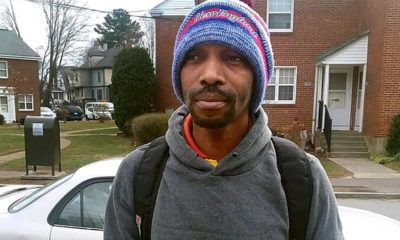Published
6 years agoon
By
AP News
The deadly attack at Columbine High School in 1999 seemed to usher in a new era of school shootings.
Two decades later, polls consistently capture growing fears among American parents that their children face imminent danger whenever they go to school. Those fears have only intensified since attacks at an elementary school in 2012 in Newtown, Connecticut, and last year at a high school in Parkland, Florida.
In the aftermath of the Parkland shooting, some research suggests that gun violence is a near-daily experience at schools. Other studies indicate that deaths from school violence have actually declined since 1991. Answers to some key questions about school attacks over the last several decades:
A March survey by The Associated Press-NORC Center for Public Affairs Research found that a majority of Americans believe schools and colleges, along with places of worship, have become less safe compared with 20 years ago.
Wide shares of Americans also believe parents, the internet and news coverage of similar attacks are at least partly to blame for school shootings.
About 2 in 10 parents are not at all confident or not very confident in their child’s safety while at school. About a third of parents are very confident or extremely confident, according to the poll. But fewer Americans put blame for shootings on schools themselves.
According to data compiled by Northeastern University criminologist James Alan Fox, who has been researching gun violence for decades, school shootings were more frequent in the 1990s than today. From 1991 until the Columbine shooting, an average of 19 fatal school shootings happened each year, with about 22 people killed.
Fox chalks much of it up to the attention such crimes receive in the news. A generation ago, there were many fewer cable TV news channels and websites covering the events 24 hours a day.
One school shooting he cites happened in 1989, when a gunman killed five elementary school students and wounded 32. The shooting in Stockton, California, is barely remembered.
Columbine was among the mass shootings in recent decades that sparked the “No Notoriety” movement, an appeal by both gun-control and gun-rights activists to avoid repeated reporting of the names and biographic details of gunmen. They hope denying attention to the attackers prevents inspiring a new crop of future shooters.
The early 1990s were plagued by a high homicide rate overall around the country, and that’s reflected in school shootings. Many of the attacks in that decade were gang-related. Gang warfare spilled out from the streets into the halls of the schools, but those shootings “were not the type of events that got a lot of attention, except for locally,” Fox said.
In more recent years, most school shootings are either related to perceived bullying or to reasons that cannot be definitively explained.
The Columbine shooters still retain influence. Peter Langman, an expert on the psychology of school shooters, has found more than 30 other rampage attacks, from California to Germany, have been inspired in some manner by Columbine.


California’s Plan to Bring Many Students Back to School for in-Person Learning in Careful Stages


‘My God, We’re Scared’: Serial Attacks Put a Suburb on Edge


Walters: Court Slaps Down No-Bid School Contracts in Fresno Case


South Korea Examining 59 Deaths After Flu Shot


US Traffic Deaths Fell 2% in 2019; 3rd Straight Yearly Drop


COVID-19 Cases Rising Among Us Children as Schools Reopen




